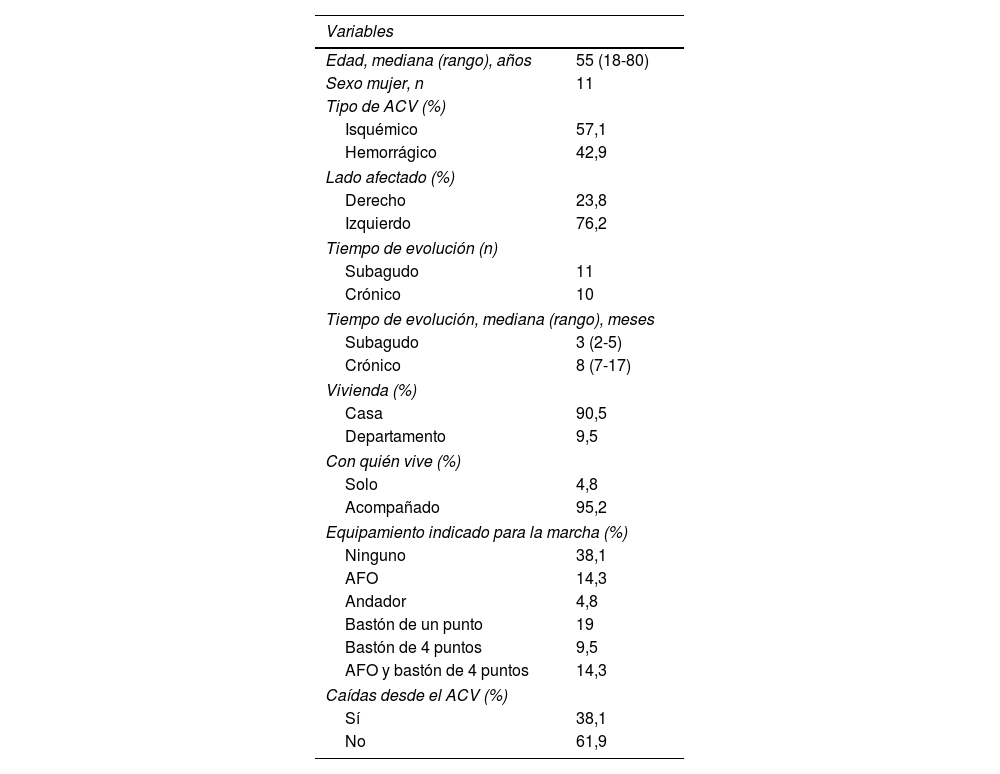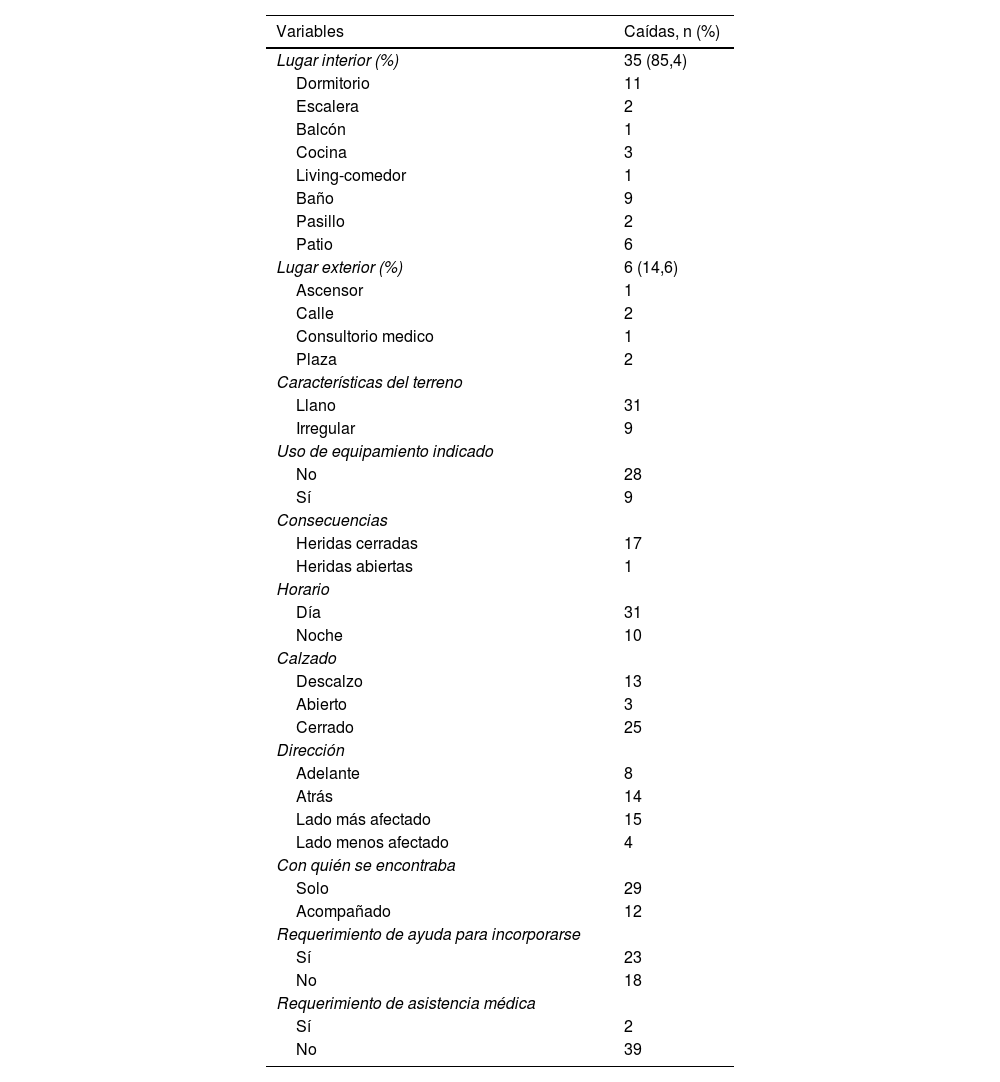Luego del accidente cerebrovascular (ACV), una de las complicaciones más frecuentes son las caídas, impactando negativamente en la rehabilitación.
ObjetivosEstudiar la incidencia, las circunstancias y las consecuencias de las caídas en sujetos con ACV hasta 12meses de iniciado el tratamiento kinésico ambulatorio.
Materiales y métodosDiseño prospectivo, serie de casos. Muestreo consecutivo. Pacientes ingresados en el Hospital de Día entre junio de 2019 y mayo de 2020. Se incluyeron: adultos con diagnóstico de primer ACV supratentorial y puntuación ≥3 en la Functional Ambulatory Category. Criterios excluyentes: otra afección que afecte la locomoción. Variables principales: número de caídas, circunstancias y consecuencias. Se midieron las características clínico-demográficas y funcionales.
ResultadosUn total de 21 sujetos incluidos; 13 sufrieron al menos una caída. Reportaron 41 caídas: 15 fueron hacia el lado más afectado, 35 en el interior del hogar, 28 sin el equipamiento indicado, en 29 ocasiones estaban solos durante el evento y en 2 situaciones se requirió asistencia médica. Hubo diferencias estadísticamente significativas (p<0,05) en el desempeño funcional (equilibrio, velocidad de marcha) entre los que se cayeron con respecto a los que no. No se hallaron diferencias significativas entre la resistencia de la marcha y las caídas.
ConclusiónMás de la mitad sufrieron caídas, estando solos, hacia el lado más débil y sin el equipamiento indicado. Con esta información se podría disminuir la incidencia desarrollando medidas preventivas.
Falls are among the most frequent complications following stroke (CVA), and have a negative impact on rehabilitation.
ObjectivesTo study the incidence, circumstances, and consequences of falls in stroke patients up to 12months after starting outpatient kinetic treatment.
Materials and methodsProspective design, case series. Consecutive sampling. Patients admitted to the day hospital between June 2019 and May 2020. Included: adults with a diagnosis of first supratentorial stroke and functional ambulatory category score ≥3. Exclusion criteria: other condition affecting locomotion. Main variables: number of falls, circumstances, and consequences. Clinical, demographic, and functional characteristics were measured.
ResultsTwenty-one subjects were included, 13 suffered at least one fall. The subjects reported 41 falls: 15 were to the most affected side, 35 inside the home, 28 without the indicated equipment, they were alone when the event occurred on 29 occasions, and in two situations medical assistance was required. There were statistically significant differences (P<.05) in functional performance (balance, gait velocity) between those who fell and those who did not. No significant differences were found between gait endurance and falls.
ConclusionMore than half suffered a fall, alone, to the weaker side, and without the appropriate equipment. With this information the incidence could be reduced by preventive measures.










